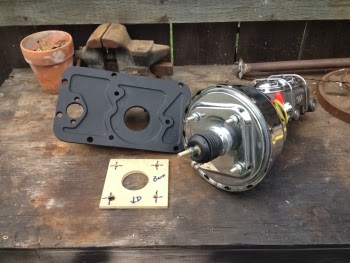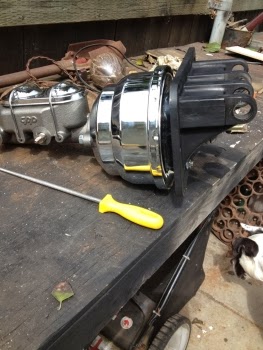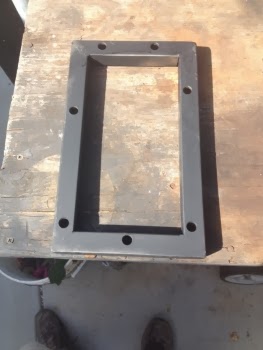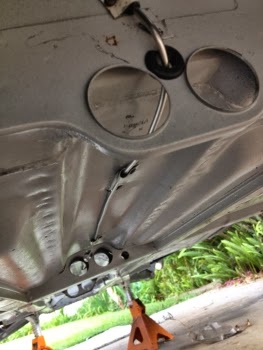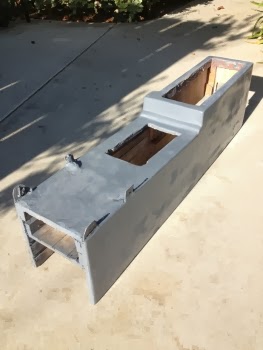The assembly is a Classic Performance universal system (P/N 8dsrb-mc-c). It has an 8" dia dual booster and two chamber universal M/C. It comes with a little chrome to boot. I think the entire set up cost just under $300. Not bad at all.
The Pantera mounting plate would have to be modified to fit the good old US 4 bolt pattern on the back of the booster. Other than that it looks to be a pretty straight forward install.
I began by rebuilding the pedal assembly. Unfortunately the torsion spring on the clutch has snapped on my assembly. I checked around and found one online for some god-awful price (with an even worse shipping price). My stubborn nature kicked in and I refused to order the stupid thing. I thought that I would resort to hooking up a simple tension spring to return the clutch if I couldn't find something that would work.
After a couple weeks of checking here and there for a torsion spring that would work on the clutch I was giving up hope. My pride just wouldn't let me purchase the original equipment one that was being extorted online. Then my buddy was showing me an old Singer sowing machine table from the 40's he was getting rid of. He was messing around with this lever that was spring loaded to return to a certain position. The light bulb went off in my head. I looked closely and found that a torsion spring was used to return this lever - one that looked like it would work on the Pantera.
I took the spring out and did a bit of bending, cut out a couple coils and wouldn't you know it - it works great. Now I have the starts of a real rat-rod Pantera! Singer sowing machine- who would have guessed.
Here's a picture of the pedal assembly assembled and ready to go (minus the gas pedal which I didn't attach for the picture). If you look close you can see the spring on the clutch pedal - a bit too big but should be just fine for now.
As I said earlier, the mounting plate needed to be modified to mount the booster I choose. I made a wooden template and used it to locate the mounting holes I needed to put into the plate.
After drilling the holes I decided to make a 1/4" steel plate just like the wooden template to give the mounting locations a bit more strength. I sandwiched the plate between the back of the booster and the mounting plate on the Pantera. Here's a couple pictures of the booster mounted to the mounting plate.
I was just about to mount the completed assembly into the Pantera when I decided to make a spacer to extend the pedals a bit more to give me some additional leg room. Here's the spacer I made out of 1" square tube. This gives me one more inch of leg room down by the pedals - good for my 6'5" body!!!
I had to drill out the mounting holes on the Pantera body to get the bolts to work properly. Once that was done it was a pretty easy matter of just bolting up the assembled system. I did have to remove the clutch pedal, slide the pedal arm towards the passanger side of the car and wiggle the entire assembly into place. Once it was in the hole I had to reconnect the clutch pedal and start to bolting up the assembly to the car.
Here's what it looks like in place.
Here's a view from inside the car. I did have to do a little reshaping of the clutch pedal to avoid contact with the steering shaft. All in all, not too tough a project.
After getting a few more connectors it was time to hook up all the lines I had been running for the brakes. I mounted a "T" and the Proportioning Valve on the wheel well just to the outside of the master cylinder. Hard lines were bent and connected to hook the master cylinder up to both the hard lines under the Pantera running to the front and real wheels. Here's a couple pictures showing you the lines that were added.
Now the entire brake system is plumbed. I will have to wait on the rebuild of the rear knuckle before I can fabricate the brackets needed to install the rear brakes. After that it is ready to add fluid and can actually stop on its own! Big steps forward.


